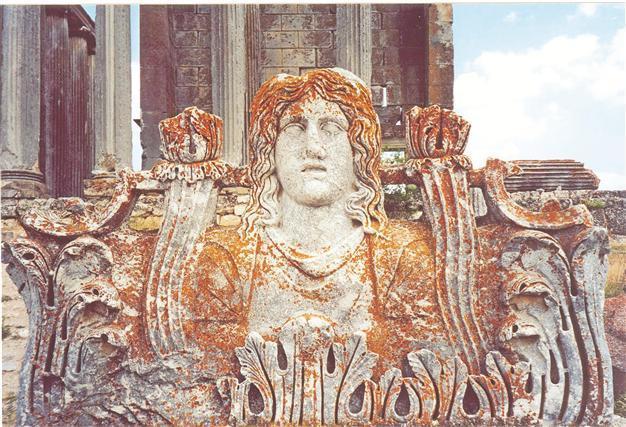Ancient city transported to cyber world with new project
KÜTAHYA - Anatolia News Agency

Discovered by European travelers in the early 1800s, Aizanoi is also known as “The Second Ephesus” for its resemblance to Turkey’s most famous ancient city in İzmir. Excavations at the area have been continuing in the area.
Local authorities in Kütahya are hoping to increase awareness of the local ancient city of Aizanoi with a new online photo project that will allow web users a chance to glimpse the beauty of the site.The inner Aegean province’s Çavdarhisar District Governor’s Office has provided 69 digital photos showing the richness of Aizanoi in an effort to encourage people to visit the ancient city, along with information in Turkish, English, Japanese and German.
The site, www.aizanoi.com, contains pictures of Aizanoi’s most famous sites, including the Zeus Shrine, a theater with a 20,000-person capacity, a stadium, two baths, the first stock market in the world, a columned street, five bridges, the “Meter Steunene” holy place, a necropolis, arches and aqueducts.
The shrine is notable for depicting official correspondence between the Roman Emperor Hadrian and city governors on its façade.
Discovered by European travelers in the early 1800s, Aizanoi is also known as “The Second Ephesus” for its resemblance to Turkey’s most famous ancient city in İzmir.
Excavations at the area have been continuing in the area for the last four decades but are scheduled to pause next month.
The name “Aizanoi” comes from the mythological hero “Azan.” The city is believed to date back to 3000 B.C. During the Hellenistic era, Aizanoi was seized by the Pergamon Kingdom and Bithynia from time to time. The city later fell under Roman rule but gradually declined in importance in the early Byzantine era. According to archaeological specialists, construction on the stadium and the theater began in 160 A.D. and continued until the third century.
Notably, a round-shaped structure dating back to the second century A.D. contains a copy of a paper from Emperor Diocletian that was written in 301 A.D. that outlined regulations on sales prices for goods in the market. Because of the document, many have claimed that Aizanoi possessed the world’s first stock market in its Macellum building.
Archaeological work at Aizanoi
This year a festival was organized on June 10 for the opening of a second set of excavations at the ancient city. German archaeologists had been conducting excavations in the ancient city since 1970, but the dig was recently transferred to the control of Denizli’s Pamukkale University. The ceremony was held in front of the Macellum building. Following theater and folk dance shows, the İzmir-based Anatolian Philharmonic Orchestra performed a concert. As part of the festival, various events will also be organized at Manisa’s Salt, Denizli’s Hierapolis, Aydın’s Aphrodisias, İzmir’s Ephesus and Çanakkale’s Assos ancient cities, as well as at the ancient theater in Bodrum, Muğla.
















